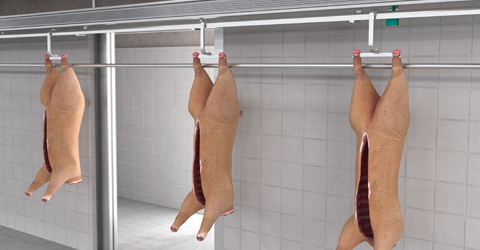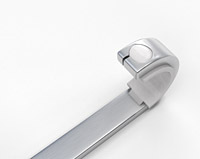RFID Enables Food Tracing
The complex logistics problems of modern slaughterhouses are virtually impossible to solve without RFID
Application
Today's large slaughterhouses are highly automated volume-optimized operations where the quality and traceability of every piece of meat must be established.
Goal
An RFID solution must enable single-piece traceability in case a recall is necessary. The solution should allow logistics processes to be optimized; reducing the handling times and number of interactions will also have a positive impact on the safety of all processes.
Requirements
RFID products must use stainless steel and other easily cleaned materials. The applied cleaning processes are very demanding and electronic components need to be designed to tolerate harsh chemicals, moist environments, and frequently changing temperatures so that a long service life can be expected.
Customer advantage
Automatic documentation of all process steps starting with the live animal up to the individual piece of packaged meat. Logistics systems are fully automated and include temporary storage, packaging, and billing systems.

Transport of the pigs via monorail conveyor
What has been done

Integrated RFID transponder in the meat hook
The law demands that food products be properly marked and traceable in case problems show up for the consumer. It is very common for live animals to be identified by ear tags. Prior to processing the animals, tissue samples are taken and transferred to the lab for medical analysis. Initially, the animal is moved through the facility on an RFID-enabled meat hook. Later, tracking is done via RFID-equipped tubs. Processing and lab analysis can take place simultaneously, which removes the need to store the carcasses in a cooling facility. This not only increases the throughput but also results in shorter process times, translating into fresher meat products.
If the lab analysis finds that a sample does not satisfy the toxicological requirements, it is possible to automatically remove all meat from this animal from the process chain. The assessed meat quality, the amount of meat, and even the thickness of outer fat layers as determined by ultrasonic measurement processes, all impact the compensation of the animal supplier. The accounting system receives this information directly from the process. A large facility can process roughly 75,000 pigs per week, which corresponds to a slaughtering every four seconds. Only RFID is able to process the vast amount of data with the necessary reliability.
RFID systems increase process safety, enable automatic payment systems, and ensure compliance with food safety regulations.








 +61 3 9358 3400
+61 3 9358 3400